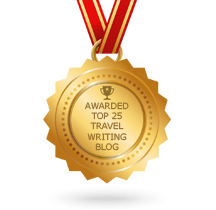Every day on the internet, the world’s biggest travel websites publish reams of articles, blogs and other content, on everything from the best museums in Manchester to hiking trails in Laos. Thousands of travel pieces compete for the attention of discerning readers and, while elements like SEO are crucial in appeasing the content robots, the most important way to attract human readers is with rich, readable content that stands out from the crowd.
With a world of competition, making your travel content stand out is far from easy. So we asked our expert team of experienced travel journalists and copywriters for their tops tips on how to enliven blogs, destination guides and articles. Want to make travel content that’s original, interesting and engaging? Then follow these five steps…

1. Start with a bang
Upon reading the first paragraph, the reader is already making an unconscious judgement call about whether to keep reading. Slate has written about the high rate of rebounds on their articles – only half their readers make it halfway through – and the importance of capture readers’ attention immediately. Why not start your article with a quote that compels people to read more and discover the context? Alternatively, begin things in media res, a fancy literary term that translates to “in the middle of things.” A simple chronological narration or tired summation of the following points will have people hitting the ‘X’, so find new and interesting ways to keep people reading.
Here are some more tips on creating the perfect travel writing opener.
2. Double down on detail
People don’t read travel content simply to hear some pretty words strung together; readers want to learn about a destination. The more specific you are, the more flavour you’ll give your piece. This varies according to the type of content that you are writing. For example, destination guides should guide (the clue’s in the name) readers around sights they are currently, or will soon be, seeing. Therefore, the details should be on things like historical context and non-visible information; things that add to and complement the experience. Blogs and travel articles, on the other hand, are designed to transport readers on the journey with you, so it’s key to add as much colour and visual detail as possible. This will capture the essence of a place and make readers feel they’re right there.
3. Trust your readers
One of the oldest maxims in writing is “show, don’t tell”. In short, it means the best writing doesn’t simply spell out conclusions, but leads readers to their own. Instead of using the word ‘cosy’, describe the roaring fire beneath the wooden beams of your private alpine lodge; the vast majority of readers will infer the cosiness without the writer making it that explicit. Guardian contributor Mike Carter believes that reading the very best travel content is like “eavesdropping on a conversation, or being shown something secret and magical. People don’t like being told what to think.” Readers won’t engage with simple expressions of emotion; you must make them genuinely feel it.

4. Vary your tone
Not every sentence about your trip to Canada needs to convey the jaw-dropping nature of the scenery. If the tone is consistently reverent, then it becomes a little wearisome for the reader. Don’t be afraid to use a little humour to punctuate the pomposity. We can’t all be Bill Bryson, but throwing in stray observations and witty asides is more rewarding to write, as well as to read. One easy way to do this is to be as honest about the challenges of a destination as you are celebratory of its virtues; eco-camping in Latvia may be laudable and bring you closer to nature, but don’t be afraid to lament the lack of toilet paper.
5. Flee from clichés
An overused phrase, poorly employed, can ruin an otherwise entertaining piece of travel writing. Far from adding colour to your piece, overused words and phrases like “bustling”, “azure” and “quirky” can instantly make your prose seem beige. Instead, rummage through your vocabulary and think imaginatively about how you can better express the atmosphere of a destination. You’ll find it doesn’t take much more effort to be a lot more original.
Want to see our words in action? You can read all kinds of colourful content written by the World Words team on our projects page. There’s also lots more travel writing advice on our blog, or you can follow us on Twitter.
Image credits: Colourful CC Image courtesy of Ole Houen, via Flickr
